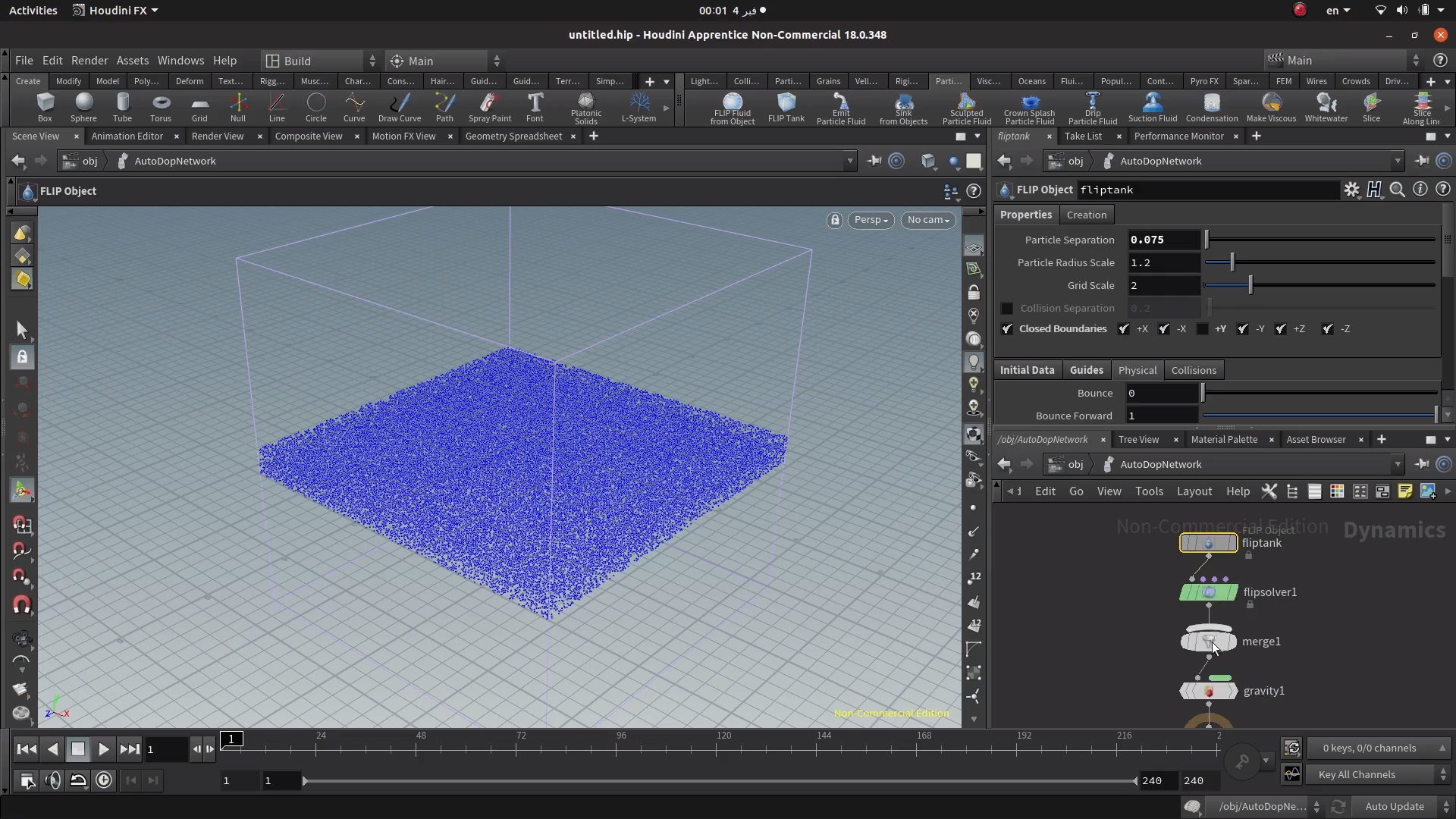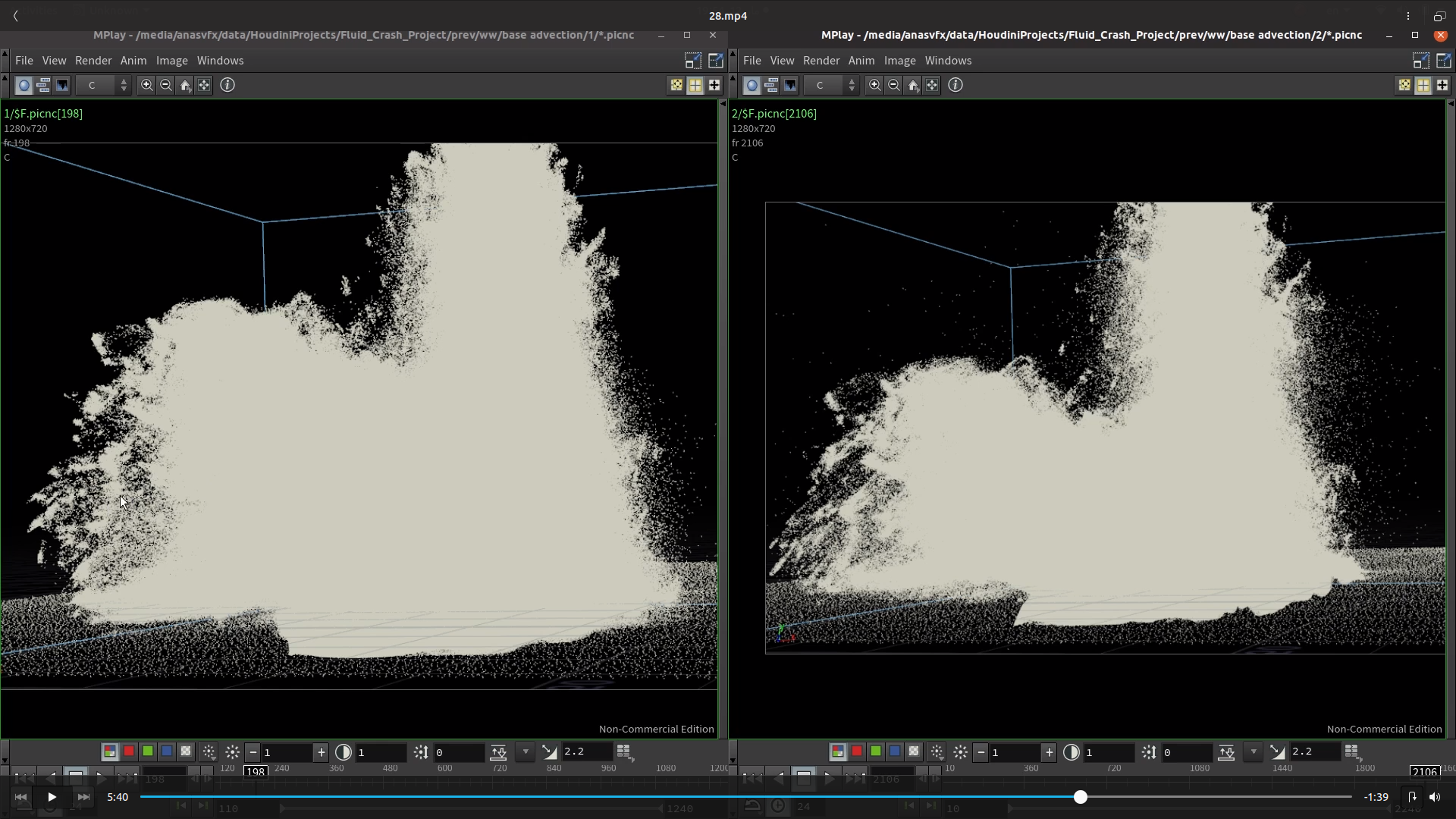Are you a Houdini beginner? Your knowledge in simulating water in Houdini is so little or you don't even have any, aren't you? Don't you wanna create a simulation like this one?
In this course, we will create this simulation and this render!
Now, take a journey through the world of FLIP simulations from zero to hero, we will start with the very basics explaining every parameter. For each parameter we will compare four simulations with four different values to be able to spot the function of the parameter, how it changes the simulation and how to use it to get the look what we want . After we finish the Helicopter crash in the water, we will use advanced techniques to simulate the explosive wave then mixing it with the crash to get this gorgeous result. After you finish this course, you will be able to do your own complex big scale simulation, simulate and control whitewater, and render a marvelous amazing scene that looks very realistic to enhance your showreel!
By the end of this course you will be able to :
- Deal with any kind of flip simulations
- Do your complex high-end big scale sim with secondary whitewater.
- You will learn about every important parameter in the FLIP solver and whitewater solver and see many tests with different values to recognize how each parameter changes the look of the sim.
- You will learn high quality meshing technique to achieve the best look of your sim.
-You will get used to Houdini ocean tools then mix them with your crash effect to make the simulation happen in an infinite ocean.
- You will learn how to render a perfect looking sccene in multiple layers (render passes).
- You will learn how to do compositing of your scene, ex...how to merge the render layers and use them to enhance the final outcome of your scene using Nuke.
Total duration: 6:43 Hours

Part 1: Introduction to FLIP Solver
In this chapter we are gonna use the shelf tools for doing simple flip fluid sims of a sphere falling in the water discussing how the pipeline of the fluid sims work in the DOP network and some of the basic parameters in the solver.
Part 2: Simulation On The Run
In this chapter where we will import our animation in Houdini, create our flip tank of the simulation and get everything ready for the sim , then we are going to do a lot of tests on different parameters to reach the result we want.
We are going to tweak our collision and simulation by controlling the powerful parameters of the solver .


Part 3: Whitewater Simulation
It’s time to do a cool whitewater sim to enhance the look of our simulation and to add the beautiful foamy looking to our render.
This will involve a lot of tests of different parameters digging very deep into the different parameters that will help us modify our whitewater simulation.
.Part 4: Different Meshing Methods
In this chapter we are going to use a very advanced way to mesh our sim trying our best to conserve the small details.


Part 5: Rendering and final compositing
We are going to render the scene for compositing.
This chapter will cover the principles of rendering fluid scenes and the management of our render passes to get the full benefit of them. We will begin by adding lights and making shaders, then finally, we are going to render different passes and composite them in Nuke. The final outcome is amazing, the same as the Vimeo video I attached the link of above.
COMMENTS
Please log in to leave a comment.